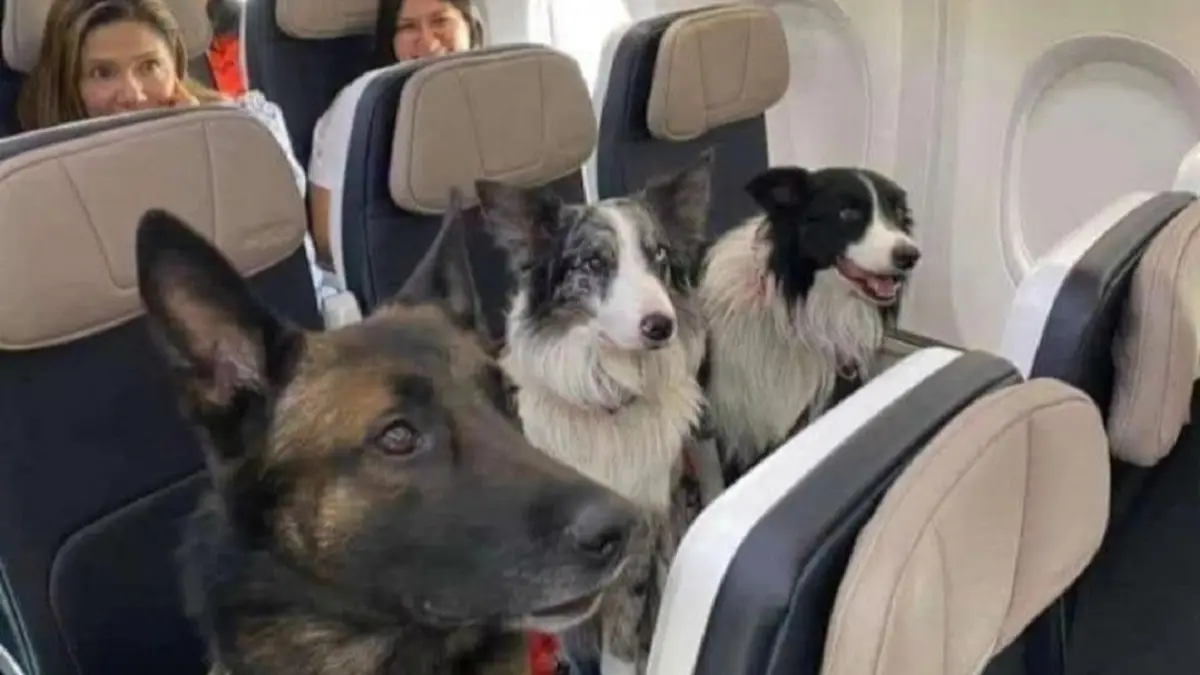The holidays are coming, and for many people, their pets are already part of their family and daily life. So organizing trips with them is not a difficult decision to make. However, despite all the good that sharing with them brings, there are also challenges and doubts about how to plan a trip with our dogs and cats as companions.
While a short trip can be challenging, trips abroad with our pets are even more complex. They require exhaustive planning that includes from management of veterinary permits and certificates until adaptation to the regulations of each country regarding the entry of animals, complying with transportation, accommodation and health regulations.
And we must not forget to ensure that they travel safely. safe and comfortablecomplying with the airlines’ demands and taking into account your well-being throughout the journey, without this being a condition.
Pets airplane trip
ABC
What procedure do I have to do to take my pet on a trip abroad?
To move out of the country with your pet, it is necessary and essential manage the International Veterinary Certificate (CVI) issued by the National Agri-Food Health and Quality Service (Senasa)according to the health requirements of the destination country.
These are the steps to follow to process the CVI:
- Check the health requirements of the destination country:
People who wish to take domestic dogs or cats abroad must process the CVI issued by Senasa, based on the health requirements of the destination country.
To properly organize the processing times in relation to the trip, it is crucial to verify the validity of the CVI and the established deadlines to comply with the health requirements of the destination country. In addition to informing yourself in advance about these measures to avoid inconveniences and delays.
- Take turn:
All certifying offices require a previous shift to be attended. It can be obtained through the contacts of the officesor online by self-management system in authorized offices.
For this last method, you can request an appointment up to one month before the trip at the offices that offer this service or in the Mascotas System. It is advisable to register, complete the necessary information and generate a payment coupon before going to the Senasa office.
- Go to a licensed veterinarian:
The veterinarian is the one who should certify that all health requirements are met of the destination country, including vaccines, treatments and certificates. It is important that products approved by Senasa in Argentina are used.
On the other hand, if the animals have current vaccination certificates issued by a veterinarian abroad, these may be considered valid if they meet the requirements of the destination country and are in order. However, treatments performed outside the country are not acceptable to process the CVI.
- Report to the office:
On the date and time of the assigned shift, you must go to the office with the original documentation issued by the veterinarian, as well as the copies required to obtain the CVI. This is issued in the name of the person traveling with the dog or cat.
If the animal is transported unaccompanied in the hold, it will be issued in the name of the person who will receive it in the destination country.
- Obtaining the CVI:
Finally, on the day of the trip and once the CVI has been obtained, it is important to carry it with you, along with the Original Rabies Vaccine Certificatewhich must always remain in the possession of the person responsible for the animal.
Main recommendations for processing the certificate
One of the most frequent doubts is about the deadlines to obtain the CVI. For this, after check in advance the requirements established by the destination country and the validity of the required documentation, Senasa provides three modalities to get it:
- Very urgent procedure (spontaneous request)
For those situations where it is not possible to coordinate a shift, this modality that includes a only face-to-face instance, without prior appointment, at the certifying office to present the documentation (original and photocopy), complying with health requirements.
If the documentation is correct, you will be able to withdraw the CVI on same day. The offices of the Lazaretto and Aeroparque (CABA) are the only ones that operate under this modality.
- Procedure (72 hours) and urgent (24 hours)
The first option requires the coordination of a previous shift for one first instance presencel where the corresponding documentation (original and photocopy) will be presented. If it is correct, you will be able to remove the CVI in a second visit 72 business hours later.
Meanwhile, the second is with prior coordination of a shift, where the user attends only once to the certifying office and you will be able to withdraw the CVI within 24 hours.
For both modalities, the appointment can be requested by self-management or through contacts at the agency’s offices.
This modality is completely virtualwithout requiring you to appear in an office in person. The entire process may take up to 4 business days since, once the request for the management of the digital CVI is received, Senasa will analyze the documentation within 72 business hours to corroborate compliance with the documentation.
If correct, the payment coupons will be sent and, once the receipts are uploaded, you will receive the digital CVI in your email box within the next 24 business hours, ready to download and print. And in case it is incorrect and must be done again, the 72-hour review period restarts from this new load in the system.
Currently, it is authorized to transport dogs and cats to Brazil, Chile, Paraguay and Uruguay. Also for land transit through the Southern Territory of dogs and cats (Argentina-Chile-Argentina).
On the other hand, remember that Each certificate covers the transfer of a single pet.so if you have more than one you must generate a request for each of them.
Finally, it is important to note that if you have any questions, contact Senasa via email ([email protected]), WhatsApp (+541135859810) or at the agency’s offices (open Monday to Friday from 09:00 to 17:00)
Source: Ambito




